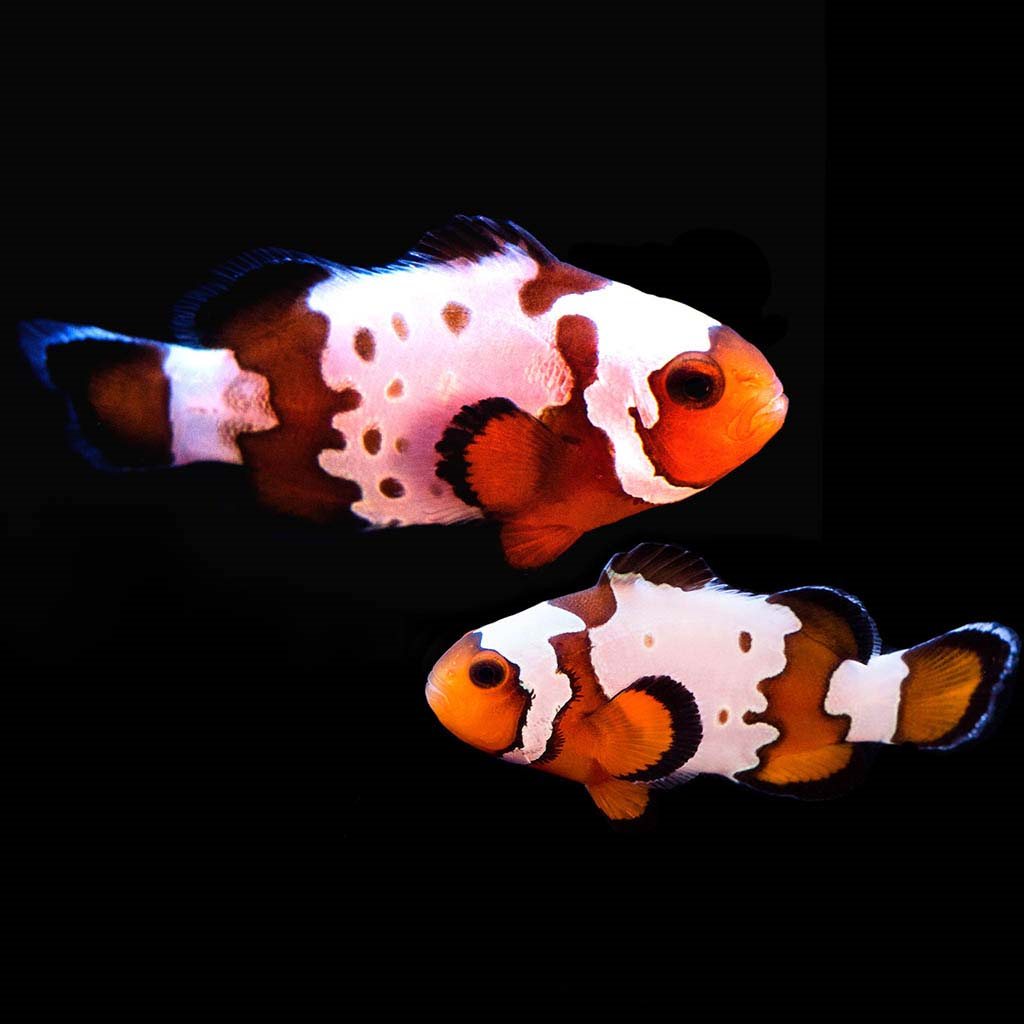Snowflake Clownfish are absolutely beautiful ocellaris variants. Unlike the typical clown, Snowflakes do not have uniform stripes. Instead, the boarder between the orange and white patches form stunning, irregular swirling patterns. As a result, these clownfish show a little more variability that the standard ocellaris clown. These fish can also display random orange speckles in the white bands. Snowflake Clowns are ideal starter fish for marine tanks, and great for beginners.
Snowflake Clownfish Ecology.
Clownfish form strict hierarchies, in which, the dominant fish is female. In the absence of a matriarch, a larger male clown will change gender and also become the new boss. When it is time to lay eggs, the breeding pair will clear an oval shaped space for brood to go. The male Snowflake Clownfish take up the job of guarding and fanning the eggs. Success of the brood depends on how attentive the subordinate males were.
Famously, Clownfish share a symbiotic relationship with anemones. The Anemones offer the clownfish protection against predators. This is so, because anemones have stinging cells called nematocysts. Clownfish have protective mucus coats, which prevents the host from stinging them. In return, the Snowflake Clownfish brings in food and keep the Anemone free from parasites.
Clownfish are omnivorous, they will eat some algae and small meaty foods such as zooplankton or larvae.
Clownfish: In the Aquarium.
Snowflake Clownfish do best when fed a varied diet. They will accept frozen Mysis shrimp and enriched frozen brine shrimp. They will also devour live foods, such as copepods and amphipods, that can be cultivated in attached refugium. Over time they will accept high-quality pellet and flake. We adapt all our Snowflake Clownfish to aquarium life before they leave us. We focus on their health, and most are eating a good quality flake food and/or pellet, such as JBL Maris, before being offered for sale.





Reviews
There are no reviews yet.